

Some weeks ago, we decided to host a webinar about artificial intelligence (AI). This might seem an obvious move in today's “AI hype” context, where it is not uncommon for our LinkedIn feed or other social networks to be flooded with the word. For better or worse, AI has become ubiquitous in daily life for many. As founders and business managers, how should we approach this new reality?
Several of these concerns are faced daily by the sales and pre-sales team, who deal with founders constantly and are steeped in the reality of startups. This is why we wanted to bring our own perspective to the discussion, contributing what we see from our consulting side.
To that end, we partnered with Angel Squad to host the webinar "AI: Beyond the Hype" with Bruno Ferrari (XL's Principal) to help people at this crossroads decide and evaluate the incorporation of AI from a pragmatic and strategic place.
We've come up with this written recap to get you up to speed in case you missed it. You can always check out the recording, but we hope to capture the webinar's spirit in this blog!
Disclaimer: This webinar refers specifically to GenAI and LLMs, not traditional or Deep Learning AI.
AI's Current State
GenAI achieved in months, which took decades in terms of innovation a few years ago. Take, for example, the creation of the first mobile phone (a Motorola) in 1973 and the launch of the first iPhone in 2007. The evolution that mobile phones had in that 34-year gap took only two years in terms of GenAI.
In terms of innovation and to continue the metaphor, OpenAI has positioned itself as the Apple of the AI world. Despite other companies lik Hugging Face making significant advances and research in LLMs, OpenAI introduced GenAI to the mainstream public. At the end of November 2022, ChatGPT became a household name, and only five months later (March 2023), they released GPT-4, a model so advanced it can pass as a human more than 50% of the time.
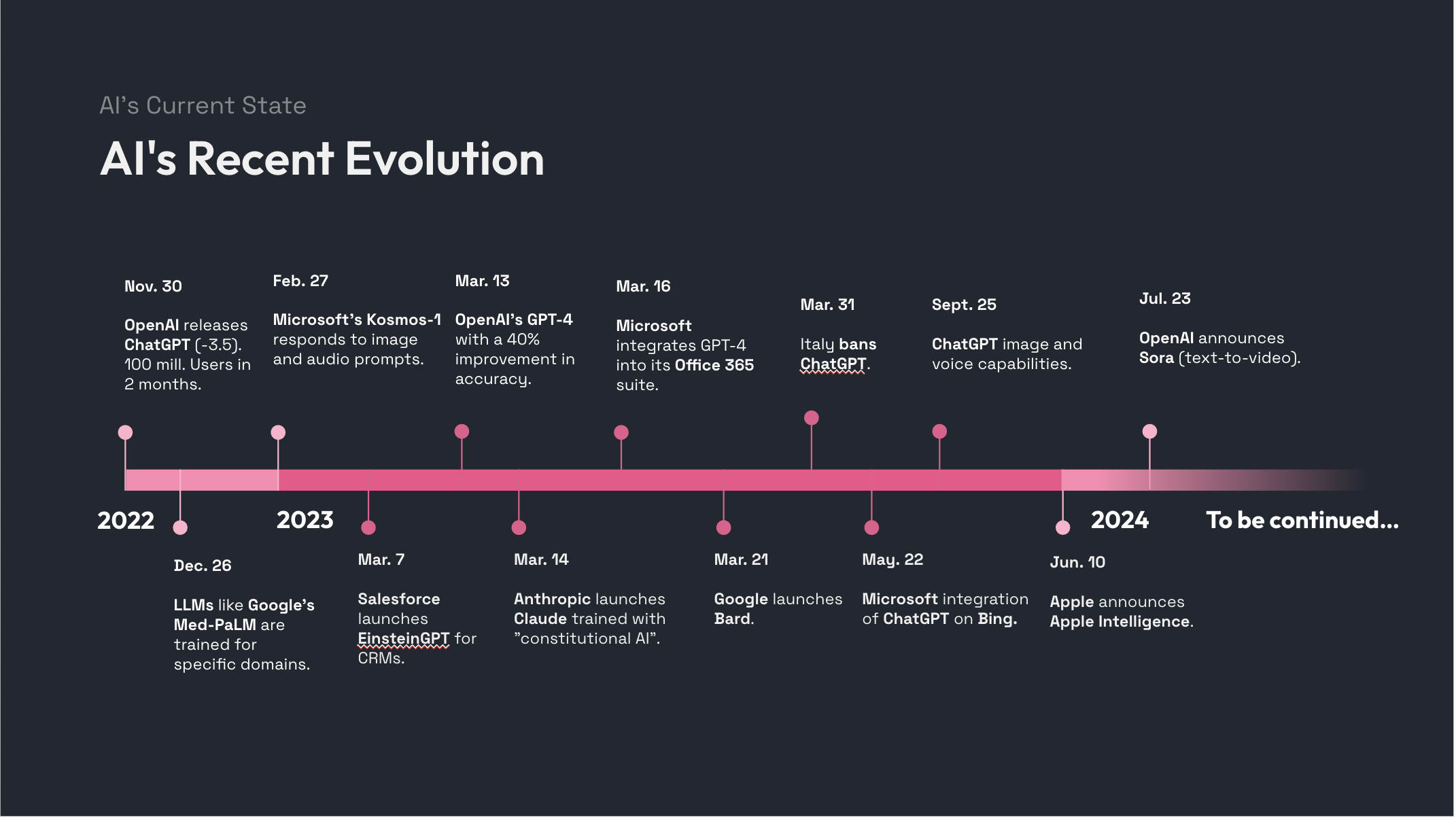
Now, every major tech company has its version of ChatGPT or the model embedded in major tools the workforce relies on. However, we're just beginning to understand how these tools will shape industries and even society as a whole, and there are still many challenges and unknowns ahead. So, what's its true potential?
AI's Capabilities and Limitations
It's important to understand that, like most things in life, GenAI has trade-offs, and people who don't deeply understand GenAI might have some misconceptions about what it can and cannot do. But first, a disclaimer: This type of AI is probabilistic, not deterministic. This means that while GenAI can provide good insights and predictions, it doesn't always guarantee exact outcomes. This is key to deciding if this tech is a good fit for your company, which might not be the case if you require precise and consistent results.
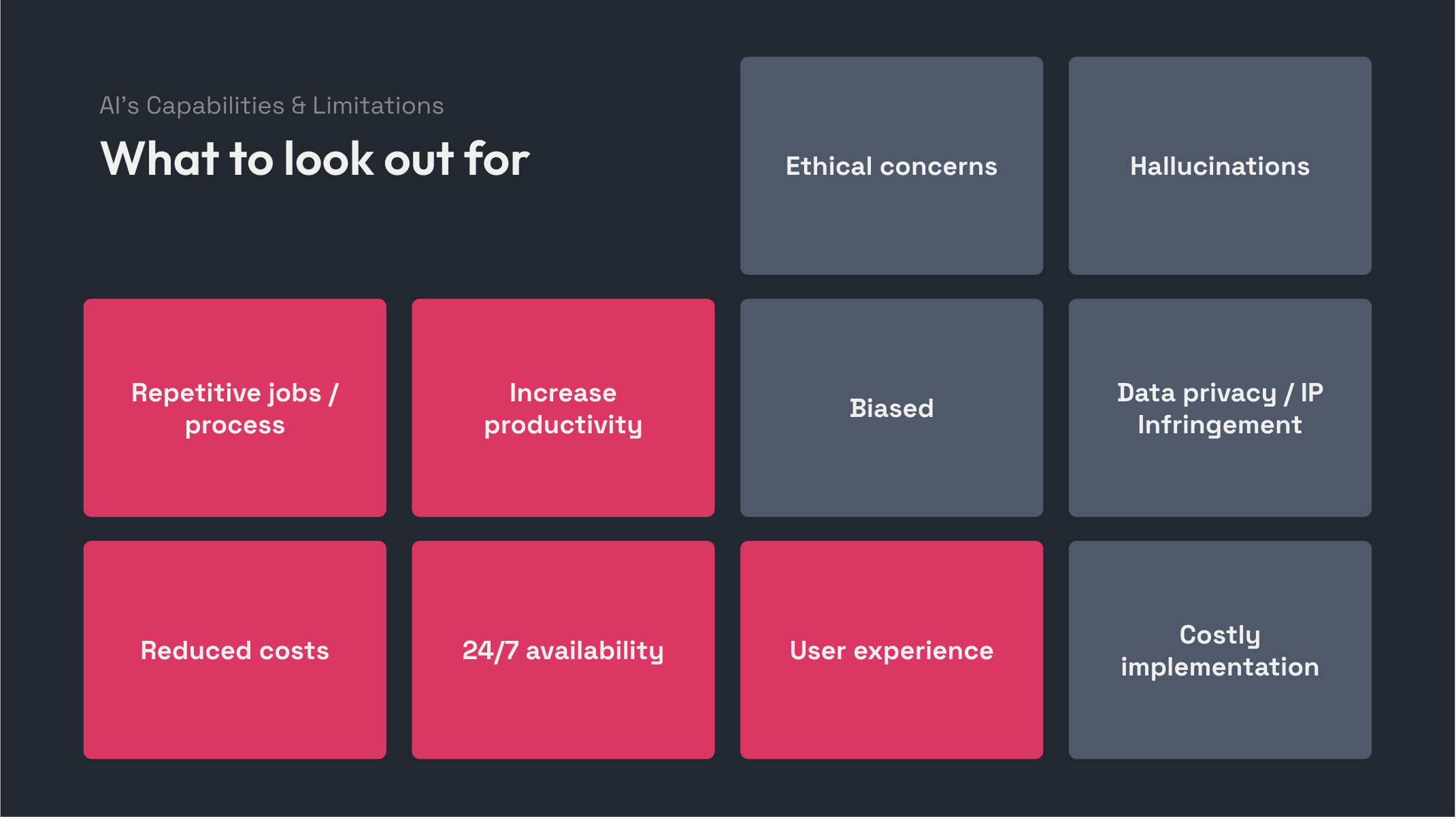
However, it presents many advantages. We highlight two:
- GenAI excels in performing repetitive tasks, leaving room to focus on more creative and strategic aspects of the work.
- It has the potential to considerably improve user experience, providing a more personalized and highly intuitive experience for users. This is especially valued by GenZ users (according to many founders who are catering specifically to that audience).
It's important to acknowledge the trade-off we mentioned, because:
- LLM's can hallucinate due to them being probabilistic. This is dangerous as it could lead to misinformation or incorrect decision-making, so depending on the industry and regulations in place, it might or might not be a fit.
- Data privacy and intellectual property (IP) infringement aspects must be considered. For example, authors sued Antropic for using their work and others' work to train their model Claude. This will continue to happen if GenAI is trained with public data accessible by the internet.
AI's Mishaps
To illustrate that not everything is perfect in the GenAI world, we gathered some AI “horror stories” from incidentdatabase.ai in which AI proves it's not a panacea. These, of course, are mistakes where the stakes are high, but it goes to show how errors have the potential to be expensive as well as unethical.
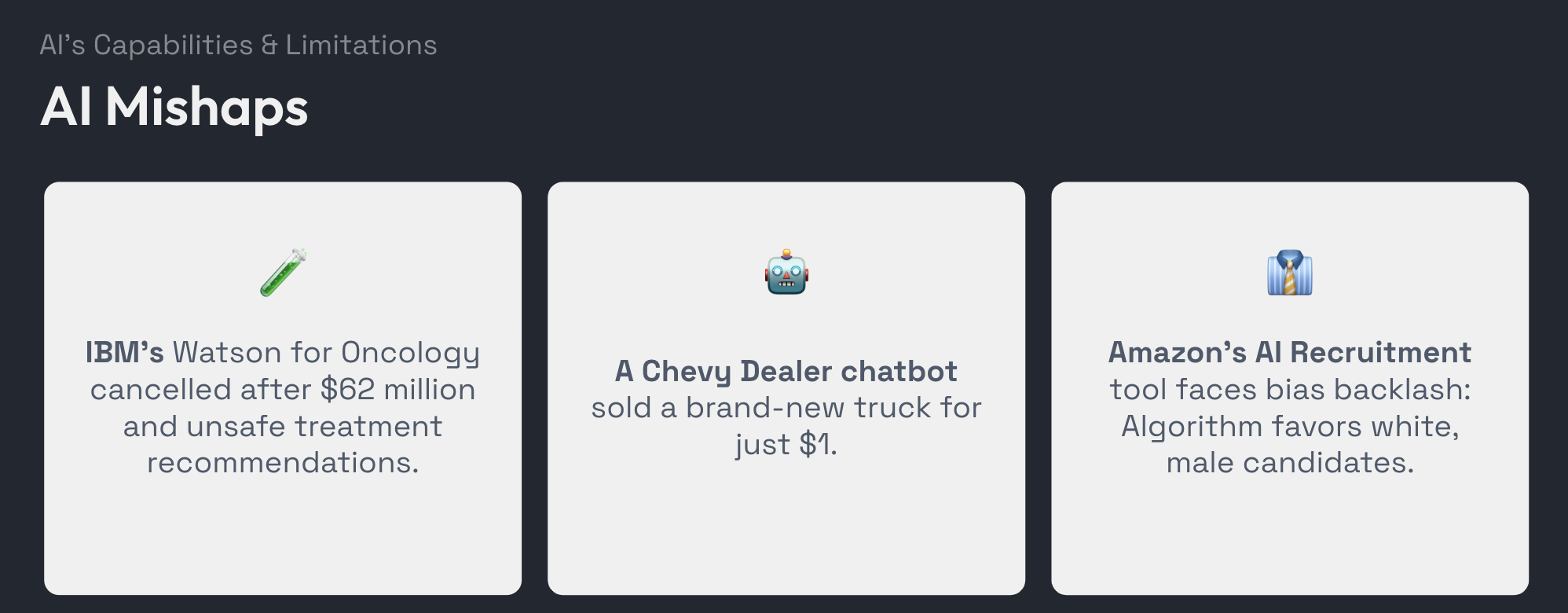
You can filter and check the database for other AI-related incidents that prove AI success largely relies on careful implementation and ongoing monitoring. Keeping these factors in mind can help avoid costly mistakes and ensure that, in the end, GenAI delivers actual value for your organization and your users, which is the whole point.
Assessing your product needs: is GenAI the right solution?
This is the most crucial question: is GenAI truly the right solution for your product?
Businesses like AI-powered smoothies might seem impressive but lack real value or are not fulfilling a real need. There are many cases like this in which GenAI is used for marketing purposes rather than solving an actual problem.
We've also heard from founders that they believe their products must include AI to successfully raise funds, making it a business requirement at this point. This is concerning because it reflects the current hype, which might lead to significant issues in the future, including the much-discussed bubble effect and the misuse of AI, resulting in higher costs and complex maintenance.
So, what's the best approach for avoiding AI for the sake of AI?
- Focus on the problem you're trying to solve and the value you deliver to your users.
- Once you have that problem, assess whether AI is truly needed to address those pain points. Only then can you consider implementing a GenAI solution.
Most products don’t need GenAI to be successful, as they need a clear value proposition and a solution that meets user needs.
Case Study: Fasten Health
Our engagement with Fasten Health is a great example to illustrate the previous point. Fasten's founder Jason came to us with the idea of integrating AI into its product, a patient health record (PHR) solution that centralized all of the user's healthcare information into one (secure) place they could access it as well as interact with.
Our team worked closely with Jason to ensure AI implementation was grounded both in real user needs and also technical feasibility. After a few weeks of exploration, we discovered the best course of action for them was to embrace AI in a way that would help users navigate and generate insights from complex and technical data in their personal health records.
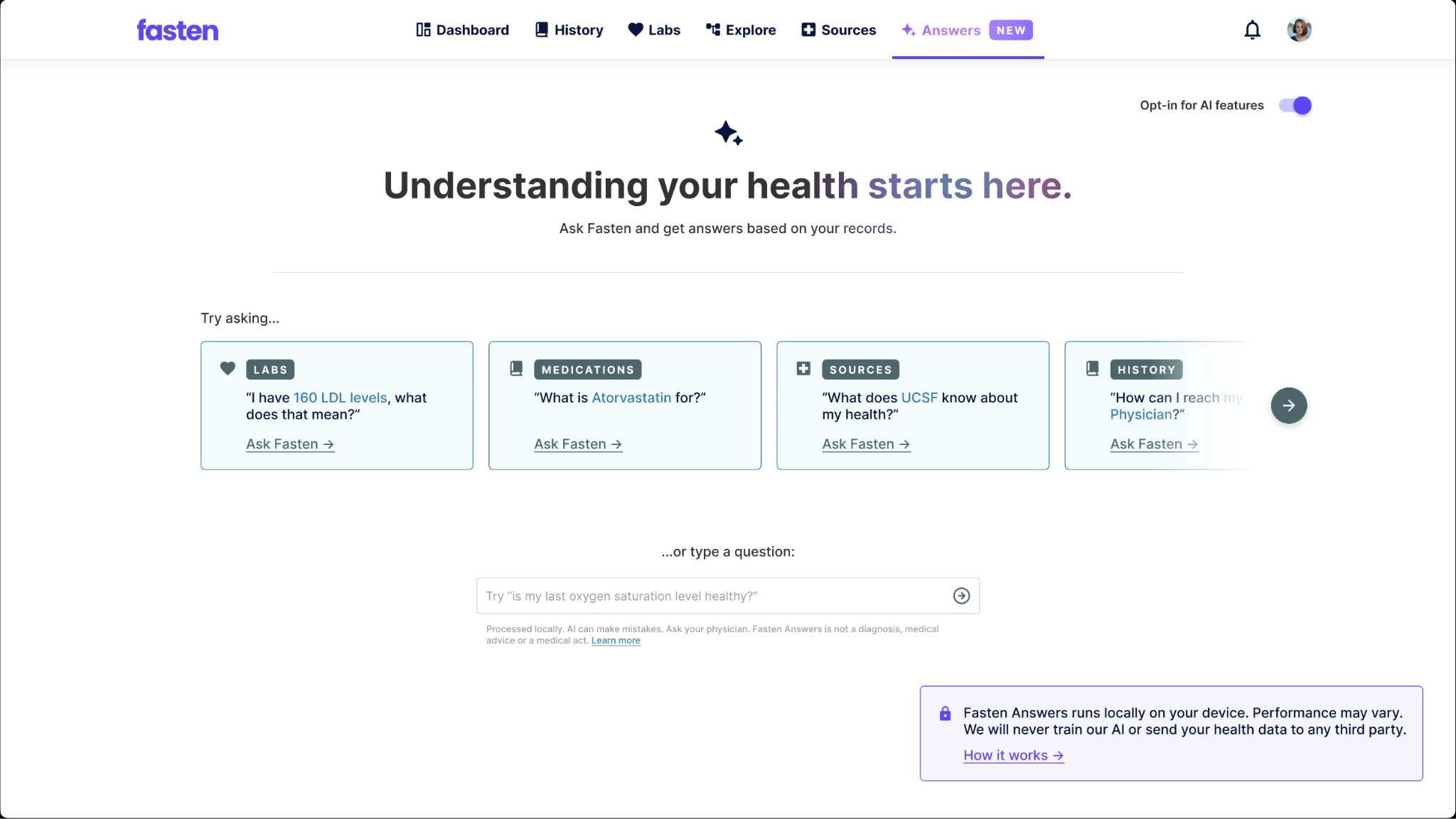
To achieve this, we architected a RAG system combining GenAI (a ChatGPT-like interface) with data retrieval from users’ health records to give personalized insights and answer health questions. We also embedded AI models to run directly on users' devices due to the sensitive nature of health data, which ensures further privacy and high standards in data privacy.
This approach allowed Fasten to leverage AI to address user needs directly – simplifying complex health information and providing personalized insights – while maintaining high data privacy standards. By focusing on the core problem and carefully considering the role of AI, Fasten enhanced its value proposition without falling into the trap of implementing AI for its own sake.
Recommendations
Some words of advice: follow the basics you'd follow ANY product, regardless of whether it has GenAI or not. The lean development mantra remains critical whether you're starting a new product or enhancing an existing one:
- Start small and aim to create an MVP that solves a specific problem and delivers real value
- Establish clear KPIs or metrics from the outset, especially if you're looking to integrate AI down the road to have a way to gage whether AI is actually improving your product or not
- Foster smooth collaboration and alignment between teams (technical, product, and business stakeholders).
When Integrating AI
Once you've decided to go down the GenAI road, different factors might take precedence depending on your company's situation and stage. We identified some key elements that often come up in discussions with several companies or founders:
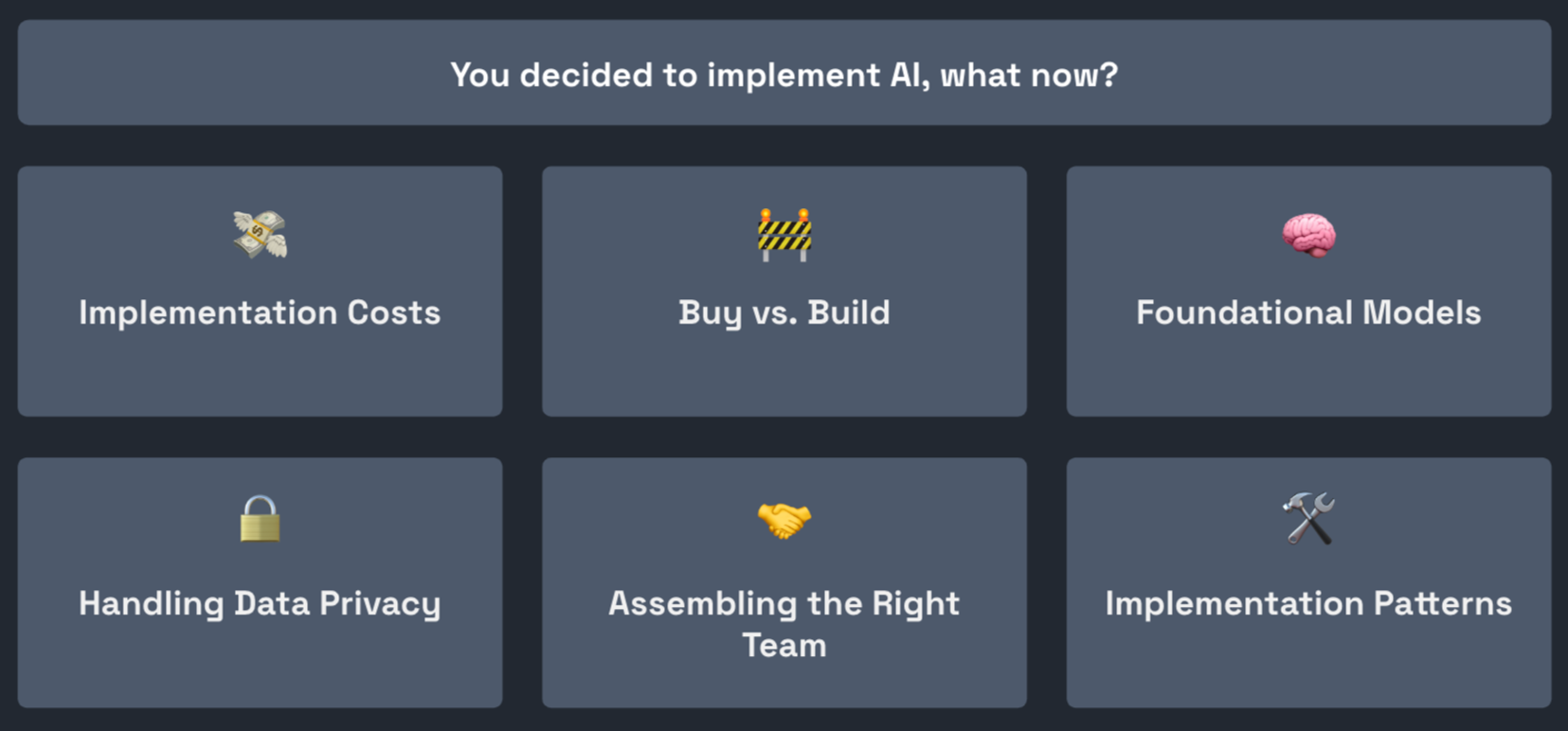
-
Implementation cots: AI can be expensive, not only in terms of custom software development but also in terms of hosting those models and making them accessible. Hosting the smallest OSS LLM yourself can cost up to 400 USD a month. And even if you decide to integrate with, for example, OpenAI, costs can escalate weekly; we've been working with companies in which the queries that we send are so complex they can cost up to 1 USD per request, which not all companies can afford, especially in their early stages.
-
Buy vs. Build: This decision is a tale as old as time. Before committing to building something custom in GenAI, do some research and see if some existing tools on the market meet your needs. Maybe there are more cost-effective off-the-shelf solutions, especially for early-stage startups and small teams. However, if you start scaling, a custom solution might be necessary to maintain control over the end-to-end process, and the data or a custom solution might be needed in cases like healthtech, a heavily regulated industry.
-
Consider what's known as foundational models: There are open-sourced (OSS) models (like the Llama models from Meta), and there are proprietary ones (like OpenAI's integrations). OSS models offer greater control and transparency but require technical knowledge and resources to implement and fine-tune to different use cases. Proprietary models provide ease of use, integration, and customer support but come with higher ongoing costs and less or no control over the technology and your data.
-
Handling data privacy: This is the most voiced concern, especially among those in heavily regulated industries like Healthtech or Fintech. There's a widespread mistrust of third-party AI providers, especially when handling sensitive data. To adress them you might consider hosting an open source LLM like we did with Fasten, it could be cloud-based or on-device, providing full control over the data and the process. It's costly but offers peace of mind.
-
Assembling the right team: Ensure your team understands your business's technical and product aspects. Often, the most advanced tech solution you can think of is not what you need. Instead, you might need a solution that aligns with your business needs or stage of your company.
-
Implementation patterns: Depending on your needs, you might choose different approaches to implementation for GenAI. You might decide to:
- Do some prompt engineering on top of an LLM
- Try to fine-tune an existing model, adapting it to a specific use case
- Train a model from scratch, which provides more customization (but requires significant data and computational resources).
The factors you prioritize will change as the company evolves, but it's essential to consider this to make informed decisions. Successful AI integration is not only about choosing the right tech; it’s about aligning that tech with business strategy and ensuring that, in the end, it adds real value to users and products alike.
TL;DR: AI Beyond the Hype
-
GenAI has rapidly evolved, but it's crucial to understand its capabilities and limitations
-
Key advantages: Excels at repetitive tasks and can enhance user experience
-
Main challenges: Potential for hallucinations and data privacy concerns
-
Before implementing AI:
- Focus on the problem you're solving and user value
2. Assess if AI is truly necessary for your specific needs
3. Avoid using AI solely for marketing or following trends
-
Recommendations:
- Start small with an MVP
- Establish clear KPIs
- Consider implementation costs, buy vs. build decisions, and data privacy
- Assemble the right team that understands both technical and business aspects
-
Successful AI integration aligns technology with business strategy and adds real value to users and products
If you'd like to delve deeper, check out the complete webinar recording here, including the audience Q&A session. You can also connect with Bruce, our speaker, for more in-depth discussions or specific questions about AI implementation in your product.
We're committed to providing more responsible AI integration and product development content, so stay tuned for future insights. Thanks for reading!

